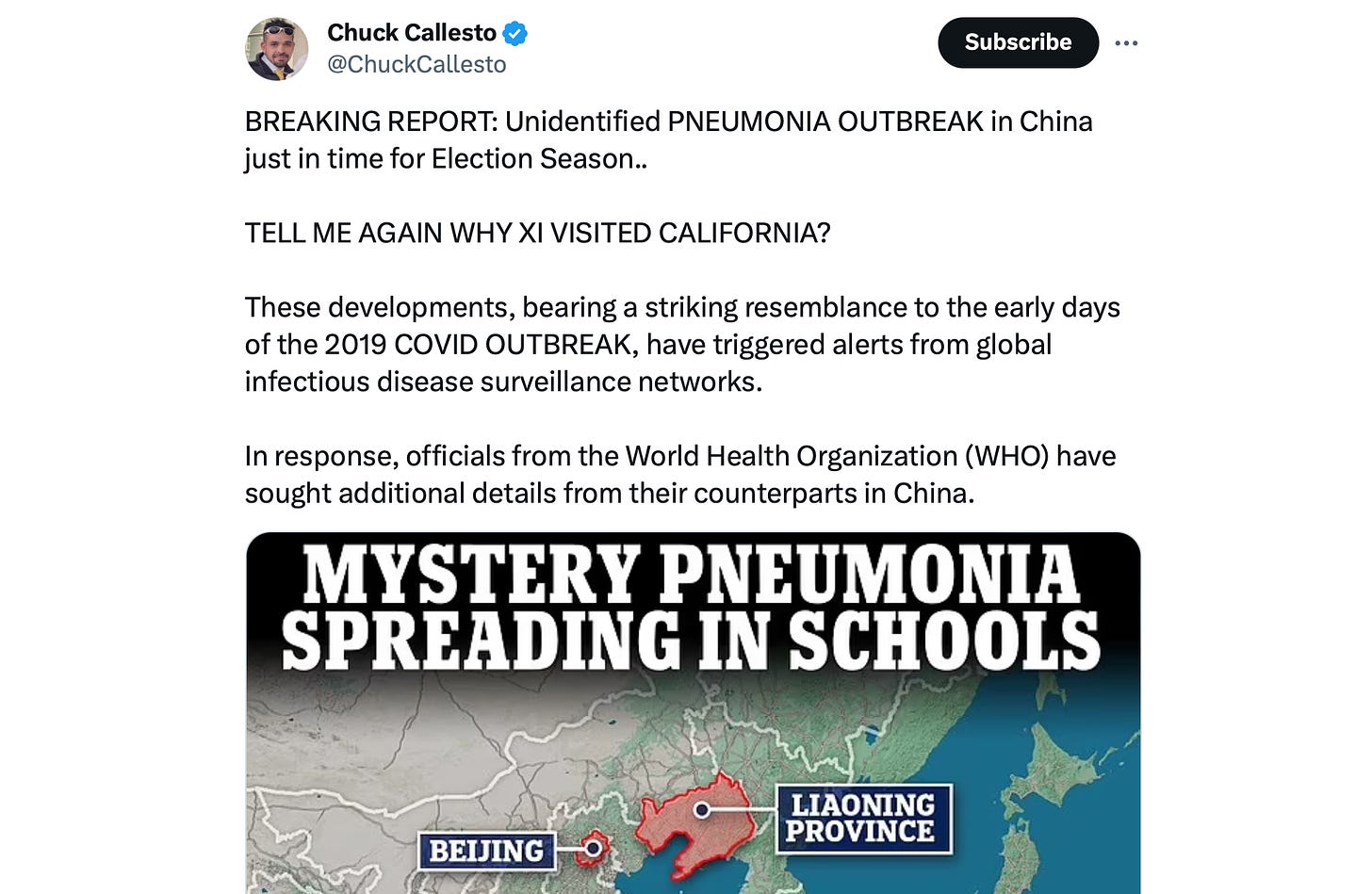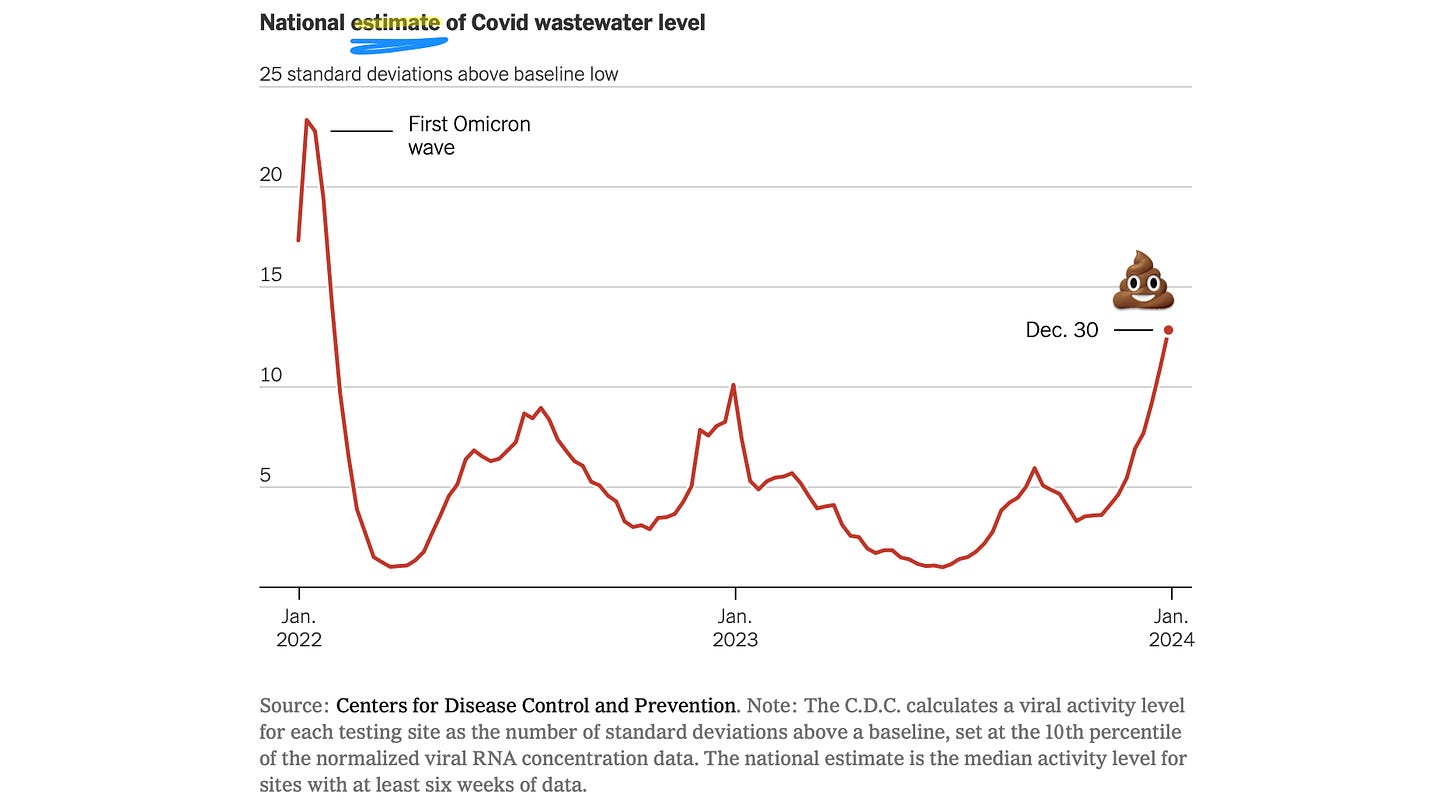But, where corporate media failed to fearmonger, the social media doombloggers took over. Here’s one example:

Now it’s the opposite of 2020. Back then, media spread the fear, and the independent bloggers tried to defuse the panic. Now the bloggers are panicking.
Corporate media’s stories about the outbreaks of pediatric bacterial pneumonia in two Chinese cities have, if anything, been understated and reassuring. Nor has the WHO or the CDC declared any kind of emergency, or even designated the bacteria as a “variant of interest.” The first two paragraphs of the Reuters article are a typical example:
China called for vigilance on Friday as a surge of respiratory illness hit schools and hospitals and the World Health Organization, which has asked the government for disease data, said no unusual or novel pathogens had been detected.
China is grappling with a spike in respiratory illnesses as it enters its first full winter season since it lifted strict COVID-19 restrictions in December, with cases among children appearing especially high in northern areas like Beijing and Liaoning province where hospitals are warning of long waits.
The key phrase was “since it lifted strict covid-19 restrictions.” Reuters was hinting the outbreaks are the fruit of lockdown-induced immune deficits. But in spite of the media’s delicate, hands-off approach, the outbreak story has triggered a giant wave of urgent hot takes on social media. It’s the big one! Here we go again, just like in 2020! It’s in the same country as Wuhan!

From all available evidence, this is not the “big one.” Bacterial outbreaks are usually localized and can often be traced to a single source like poop-fertilized produce or septic-tainted water. Bacteria are bad candidates for pandemics, mainly because they’re too big to go airborne, and normally must be transmitted through food or water.
Comparatively, if a tiny airborne virus is like a mosquito, a bacteria is like an elephant. It’s a totally different scale, and bacteria, like elephants, are too fat to fly.
But the doomblogging drums beat on. Here is another example, which even used the tiresome word “overwhelmed,” and invoked a scary “mystery,” even though corporate media hasn’t used either term.

Ugh. Nothing like that has happened yet. No deaths have yet been reported. No schools have yet been closed. No travel has been shut down. No hospitals have imploded. Given the popularity of these kinds of posts, sometimes I think there must be a lot of people out there who enjoy darkly fantasizing about remote, worst-case scenarios.
Doomblogging gets clicks and more followers. But the reality here is only — so far — that the Chinese are dealing with a couple bacterial outbreaks, and there is no evidence yet of any threat of a new pandemic. I do find it curious, even a little weird, how cautiously the media is approaching the subject, given how much they usually love a good disease story. But maybe the lagging world economy has them spooked.
Bottom line: I’ll happily debunk some over-hyped non-stories! It’s so much lighter than covering more exciting topics like real pandemics or war news.

☕️ NEW CHINA FLU ☙ Saturday, November 25, 2023 ☙ C&C NEWS 🦠
Flying bomb car probably not terrorists; why the new China flu probably isn't the 'big one'; Bill Maher and Oliver Stone talk Ukraine bio-labs; Pfizer picks the wrong fight; and 13 hostages are home.





